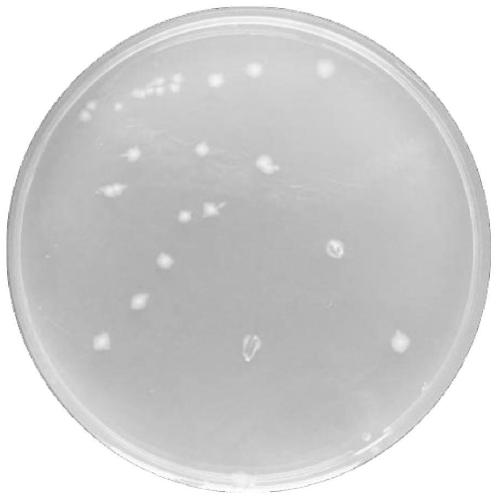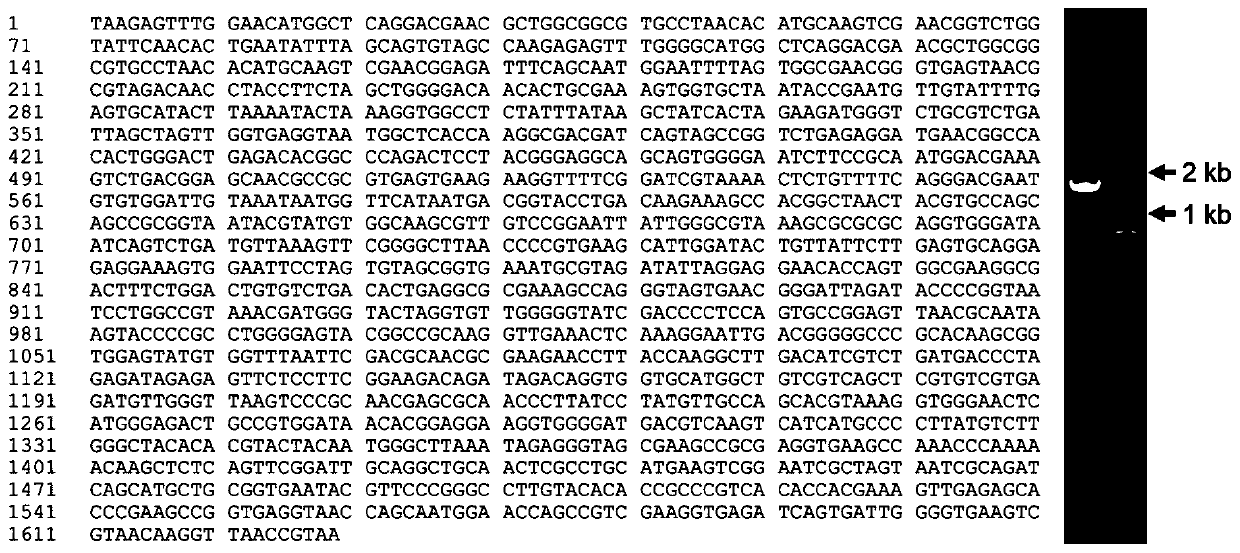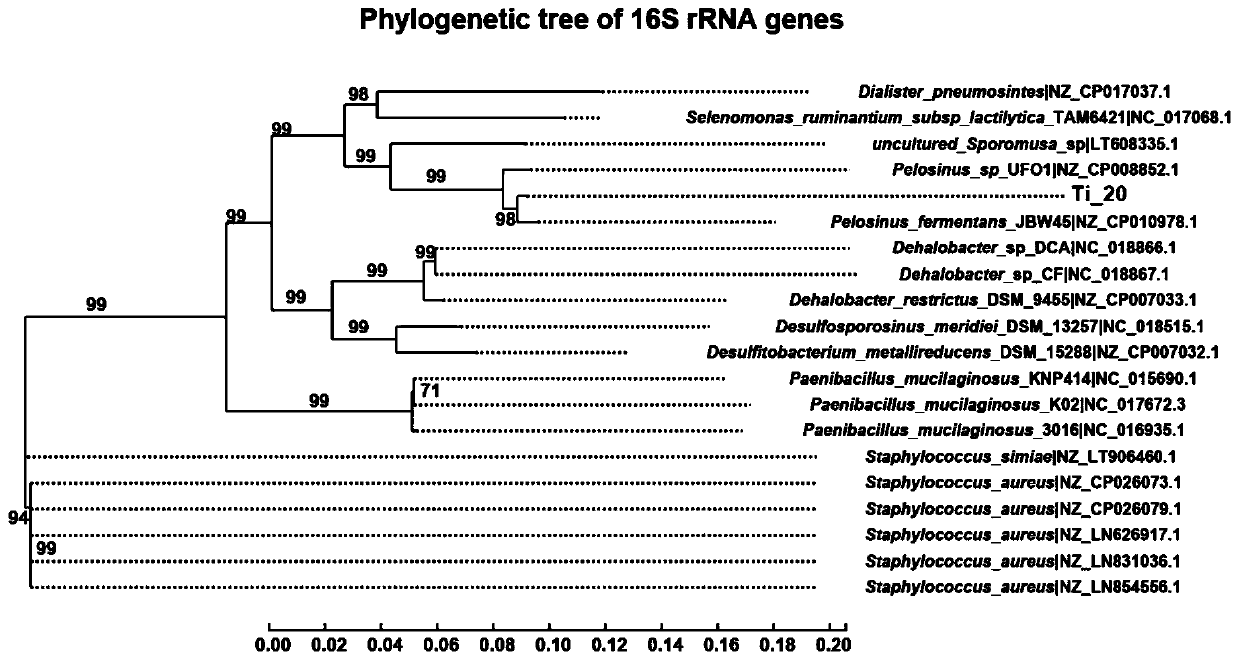Efficient anaerobic antimony reduction bacterial strain and application thereof
A technology of antimony trioxide and campylobacter, applied in the field of environmental biology, can solve problems such as not being widely studied, and achieve the effect of broad application prospects
- Summary
- Abstract
- Description
- Claims
- Application Information
AI Technical Summary
Problems solved by technology
Method used
Image
Examples
Embodiment 1
[0042] Embodiment 1, isolation, screening and identification of bacterial strains
[0043] (1) Material preparation
[0044] 1. The soil used in the experiment was taken from the antimony polluted area in Lengshuijiang City, Hunan Province.
[0045] 2. Medium
[0046] Anaerobic Mineral Salt Medium (BSM): K 2 CO 3 1.5 H 2 O, 0.24g / L; KH 2 PO 4 ,0.1g / L; K 2 HPO 4 , 0.15g / L; NH 4 Cl, 0.075g / L, pH 7.0 trace element mixture 10mL / L, 14mmol / L MgCl 2 with 700μmol / L CaCl 2 The mixed solution of 1ml / L, sodium lactate 20mmol / L. Use N 2 / CO 2 (vol / vol 80 / 20) was aerated for 15 minutes, packaged in serum bottles, and sterilized under high temperature and high pressure.
[0047] Anaerobic LB liquid medium: peptone 10.0g / L, yeast extract 5.0g / L, sodium chloride 10.0g / L. After deoxygenation with high-purity nitrogen, high temperature and high pressure sterilization.
[0048] 3. Potassium pyroantimonate mother liquor configuration:
[0049] Take 2g of potassium pyroantimonate ...
Embodiment 2
[0058] Embodiment 2, the growth situation of fermenting clay bent bacteria (Pelosinus fermentans) Ti_20 under different culture conditions
[0059] Curvularia clay fermentum Ti_20 was inoculated in BSM medium containing different electron donors and cultured anaerobically at 30°C. A total of 3 experimental groups: (1) anaerobic BSM medium + 20mM sodium lactate (Lactate); (2) anaerobic BSM medium + 40mM potassium fumarate (Fumarate); (3) anaerobic BSM medium + 20mM sodium lactate (Lactate)+40mM potassium fumarate (Fumarate). To compare the anaerobic growth curves of fermenting Campylobacter clay Ti_20 under different carbon source conditions.
[0060] Figure 4 The results showed that compared with rapid anaerobic fermentation of potassium fumarate, the bacterium had a lower utilization rate of lactic acid, but it could still slowly ferment lactic acid. When sodium lactate and potassium fumarate coexisted, the growth state of the bacteria was the best.
Embodiment 3
[0061] Embodiment 3, the reduction of Sb (V) to Sb (V) by fermenting clay bent bacteria (Pelosinus fermentans) Ti_20
[0062] Biotoxicity of pentavalent antimony to Campylobacter fermentum Ti_20: inoculate Campylobacter fermentum Ti_20 in anaerobic LB, and add 2mM pentavalent antimony to the medium, culture it anaerobically at 30℃ for 2 days, and take the bacterial liquid Centrifuge (6000rpm, 5min) to remove the supernatant. The collected bacteria were fixed with 2.5% glutaraldehyde at 4°C for 24 hours, then dehydrated with 50%, 70%, 80%, 90%, and 100% ethanol in gradient, and finally the dehydrated bacteria were used for scanning electron microscopy The shooting of the picture. The results showed that the bacteria lengthened significantly after adding antimony, indicating that the biotoxicity of antimony would seriously inhibit bacterial division ( Figure 5 ).
PUM
 Login to View More
Login to View More Abstract
Description
Claims
Application Information
 Login to View More
Login to View More - R&D
- Intellectual Property
- Life Sciences
- Materials
- Tech Scout
- Unparalleled Data Quality
- Higher Quality Content
- 60% Fewer Hallucinations
Browse by: Latest US Patents, China's latest patents, Technical Efficacy Thesaurus, Application Domain, Technology Topic, Popular Technical Reports.
© 2025 PatSnap. All rights reserved.Legal|Privacy policy|Modern Slavery Act Transparency Statement|Sitemap|About US| Contact US: help@patsnap.com



